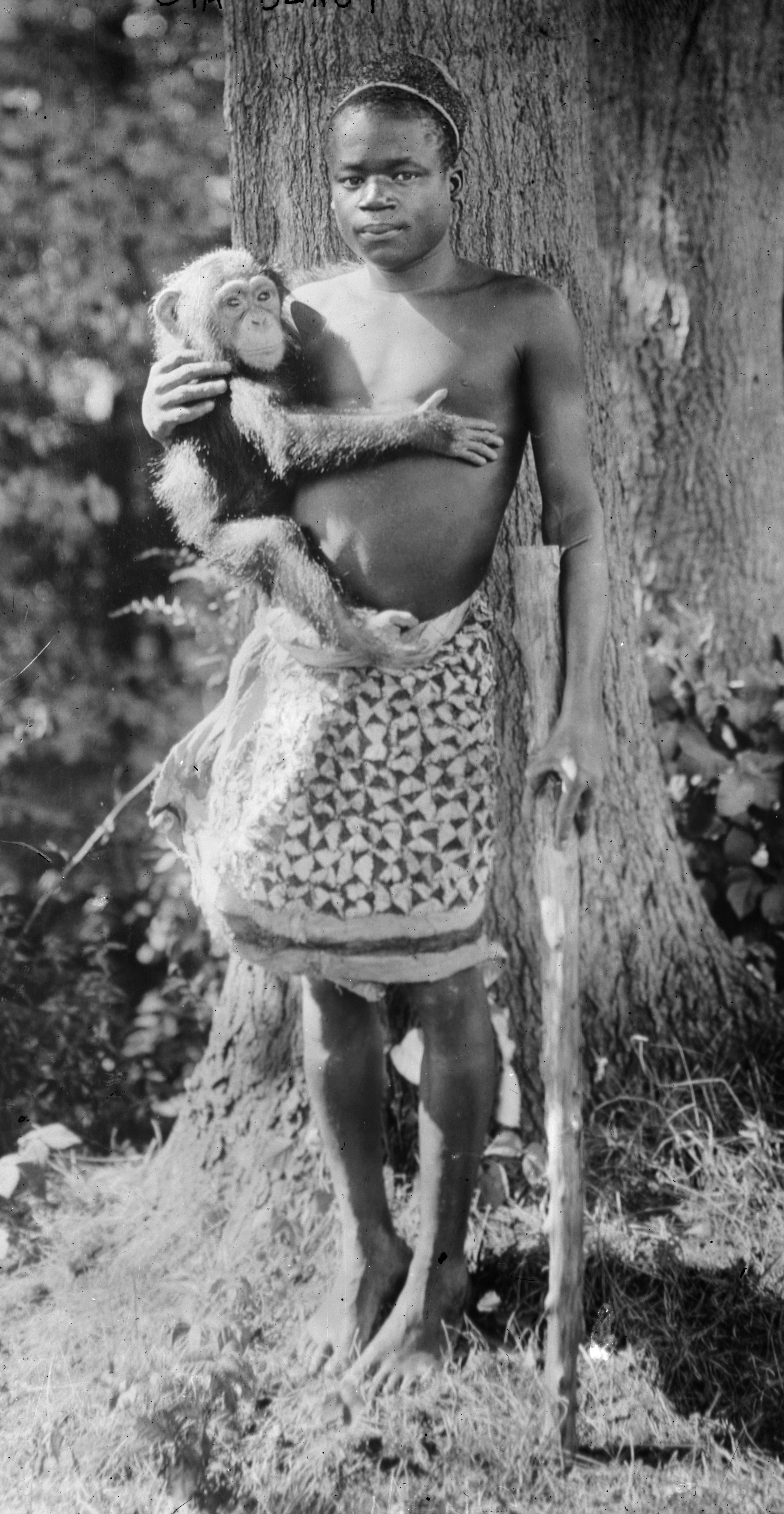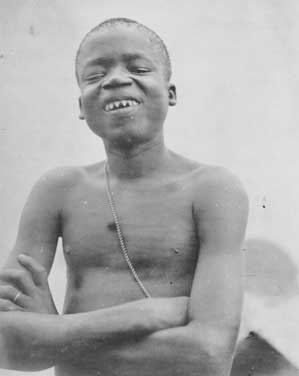
Ota Benga at the Bronx Zoo in 1906. Only five promotional photos exist of Benga's time here, none of them in the "Monkey House"; cameras were not allowed.
The African Pigmy, "Ota Benga."
Age, 23 years. Height, 4 feet 11 inches.
Weight, 103 pounds. Brought from the
Kasai River, Congo Free State, South Cen-
tral Africa, by Dr. Samuel P. Verner.
Weight, 103 pounds. Brought from the
Kasai River, Congo Free State, South Cen-
tral Africa, by Dr. Samuel P. Verner.
Exhibited each afternoon during September.
Ota Benga (circa 1883[1] – March 20, 1916) was a Congolese man, an Mbuti pygmy known for being featured in an anthropology exhibit at the Louisiana Purchase Exposition in St. Louis, Missouri in 1904, and in a controversial human zoo exhibit in 1906 at the Bronx Zoo. Benga had been purchased from African slave traders by the explorer Samuel Phillips Verner, a businessman hunting Africans for the Exposition.[2] He traveled with Verner to the United States. At the Bronx Zoo, Benga had free run of the grounds before and after he was "exhibited" in the zoo's Monkey House. Except for a brief visit with Verner to Africa after the close of the St. Louis Fair, Benga lived in the United States, mostly in Virginia, for the rest of his life.
Displays of non-Western humans as examples of "earlier stages" of human evolution were common in the early 20th century, when racial theories were frequently intertwined with concepts from evolutionary biology. African-American newspapers around the nation published editorials strongly opposing Benga's treatment. Dr. R.S. MacArthur, the spokesperson for a delegation of black churches, petitioned the New York City mayor for his release from the Bronx Zoo.

Ota Benga 1904
The mayor released Benga to the custody of Reverend James M. Gordon, who supervised the Howard Colored Orphan Asylum in Brooklyn and made him a ward. That same year Gordon arranged for Benga to be cared for in Virginia, where he paid for him to acquire American clothes and to have his teeth capped, so the young man could be more readily accepted in local society. Benga was tutored in English and began to work. When, several years later, the outbreak of World War I stopped ship passenger travel and prevented his returning to Africa, he became depressed. He committed suicide in 1916 at the age of 32.
No comments:
Post a Comment